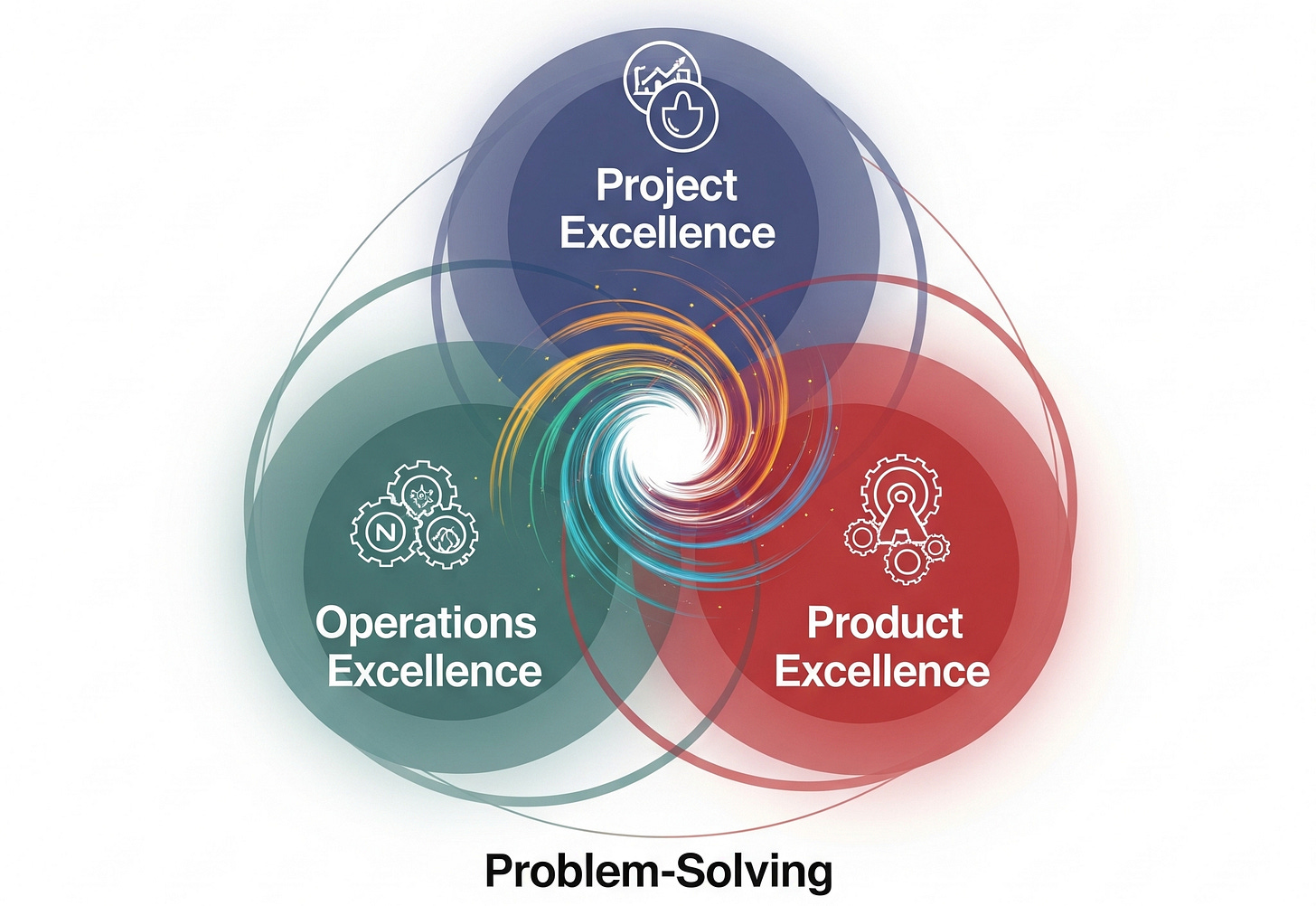Part 6 - How Problem-Solving Connects Operations, Project, and Product Excellence
A Series on Problem Solving
Problem-solving in organizations isn't a standalone skill, it's the thread that weaves together three critical management disciplines. Understanding how operations management, project management, and product management interconnect reveals why some organizations excel at turning challenges into opportunities while others struggle with even basic issues.
Not all problems are created equal, and recognizing the right approach matters:
Complex, cross-functional challenges demand the structured coordination that project management provides. These problems require stakeholder alignment, resource allocation, and clear delivery milestones.
Routine or localized issues can often be resolved through targeted tasks and process adjustments. These might involve updating a workflow, training a team member, or fixing a specific bottleneck without broader organizational impact.
Operations Management: The Performance Engine
Operations management represents the marriage of process consistency and relentless continuous improvement. When an organization's core processes function smoothly and predictably, operations teams can evolve from their traditional role of firefighting and crisis management to become drivers of optimization and incremental innovation.
This creates a continuum: Process management maintains the engine; continuous improvement makes marginal improvements, and project management rebuilds it.
Process management focuses on efficiency, repeatability, and quality control within existing systems. Project management drives transformation, creating new capabilities, solving defined problems, and delivering change within specific constraints of time, scope, and budget.
When processes are unstable, understanding when to use improvement vs transformation represents one of the strategic decisions leaders face, as choosing the wrong approach can either waste resources on unnecessary complexity or fail to address problems that require fundamental change.
The Customer-Value Bridge
Product management operates at a different level entirely, it answers the fundamental questions of what should exist and why it matters. While process and project management excel at execution and improvement, product management starts with market reality and customer needs.
Product managers serve as translators between external opportunity and internal capability. They're responsible for:
Decoding user problems and market signals
Crafting a compelling product vision and strategic roadmaps
Making tough prioritization decisions and trade-off calls
Orchestrating cross-functional teams toward shared outcomes
The Integration Challenge
There is magic when these three disciplines work in concert. Without this integration, organizations often struggle with misaligned priorities, inefficient execution, or solutions that miss the mark entirely. The strongest companies treat these as complementary capabilities rather than competing functions.


